If you're working in foundation engineering or construction, understanding the different types of pile driving hammers and their distinctions will be very helpful. A pile driver is a device used to drive piles into the soil (and sometimes underwater) to provide stable support for buildings or other structures. Common types of piles include sheet piles, pipe piles, and H-piles. Some pile hammers are also suitable for timber or precast concrete piles.
In this article, you'll learn about several common types of pile drivers and how they differ, helping you choose the most suitable equipment for your project needs. In particular, we highly recommend the Excavator-Mounted Vibro Hammer for its efficiency, eco-friendliness, and flexibility, making it one of the top choices in modern construction.
1. Diesel Impact Hammer
The diesel impact hammer is a drop hammer powered by a two-stroke diesel engine. This lightweight hammer generates force by igniting a compressed mixture of diesel and air. Its working cycle includes four stages:
- Hammer is lifted, fuel is injected
- Compression: the piston is released and falls freely; the exhaust port closes, and air and fuel are compressed together
- Impact and combustion: the hammer strikes the pile; the air/fuel mixture ignites from compression
- Expansion: the hammer rebounds, drawing in fresh air to begin the next cycle
Free-fall hammers can drive all types of steel piles and are known for their reliability. Additionally, diesel hammers are self-contained and do not require external power sources. However, due to high noise and emissions, their use is increasingly restricted in urban areas.
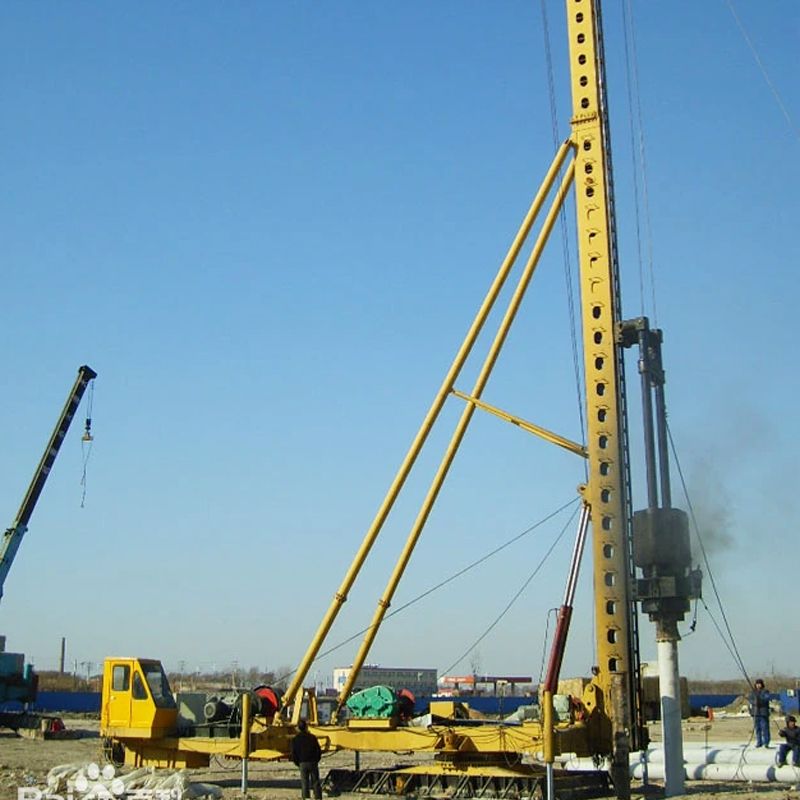
2. Vibratory Hammer
Vibro hammers reduce soil resistance through vibration and ground structure alteration. Vertical vibrations are transferred from the hydraulic clamp to the pile and then into the soil, reducing friction and enabling easier pile driving or extraction.
These machines are typically crane-suspended and powered by an external hydraulic power pack, making them suitable for large piles or marine engineering.
⚠️ Disadvantages: Heavy reliance on large equipment, low mobility, and complex logistics.
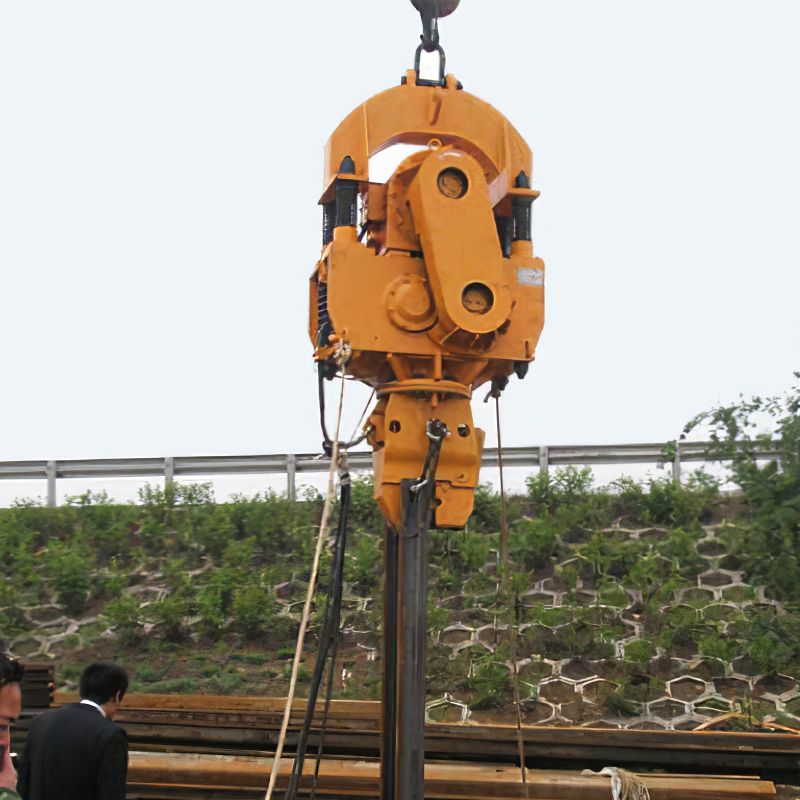
✅ 3. Excavator Mounted Vibro Hammer (Highly Recommended)
The excavator-mounted vibratory pile driver is a high-frequency hydraulic vibratory attachment mounted on excavators, also known as an excavator-mounted vibro hammer or compact vibro hammer. It integrates hydraulic vibration with excavator controls to efficiently drive and extract various types of piles, including sheet piles, H-piles, pipe piles, and solar PV piles.
Working Principle:
High-frequency vibrations transmit vertical force to the pile, liquefying the surrounding soil to reduce resistance. During extraction, the same vibration, combined with the excavator's lifting force, smoothly removes the pile.
Applications:
- Municipal infrastructure
- Solar farm foundations
- Bridge and cofferdam construction
- Urban job sites with space or noise constraints
Advantages:
✅ Highly mobile: Easily mounted on excavators for quick deployment and relocation
✅ Dual function: Suitable for both driving and extracting piles
✅ Versatile: Compatible with multiple pile types, no need for a separate crane
✅ Eco-friendly: Low noise and vibration, ideal for urban areas
✅ Multi-purpose: Effective for both land and water-based construction; excellent cost-performance ratio
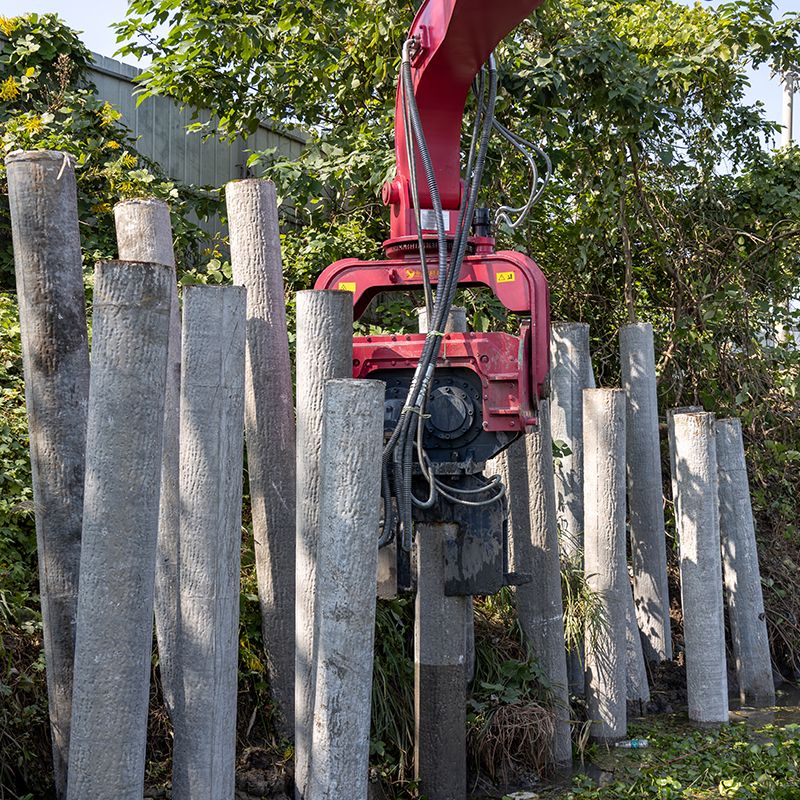
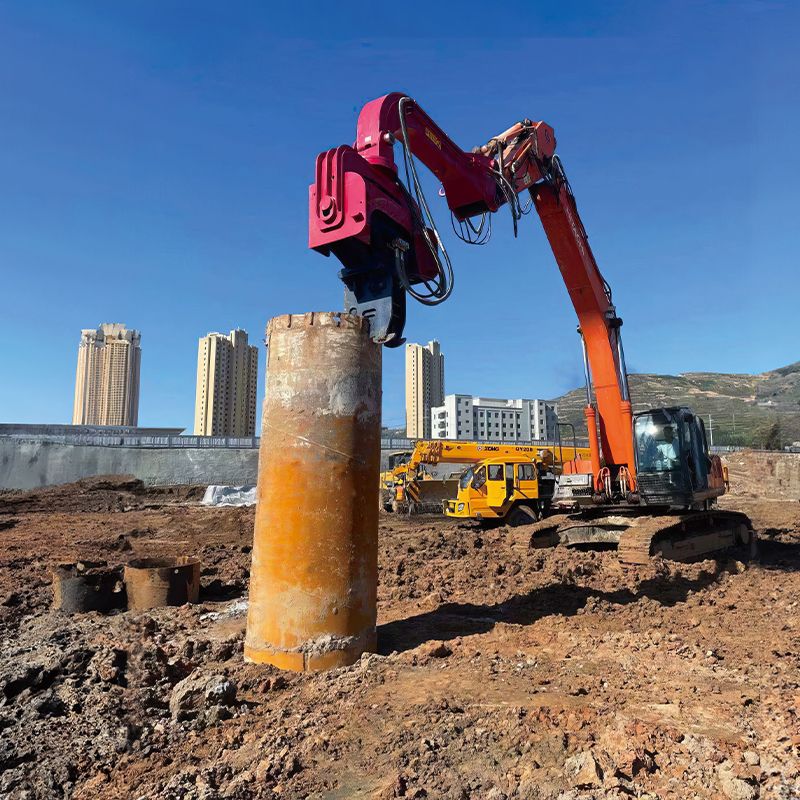
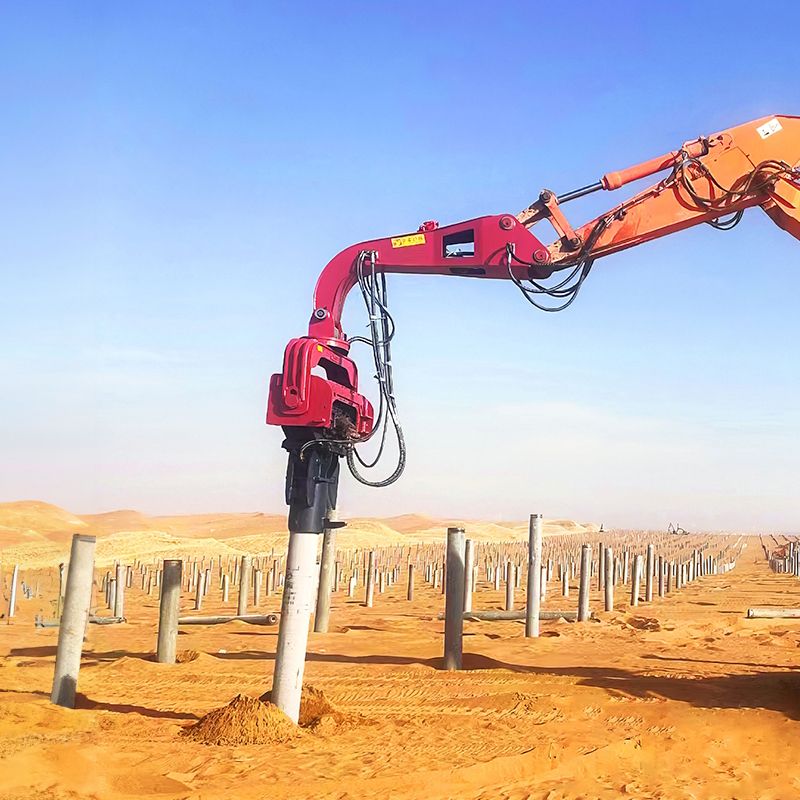
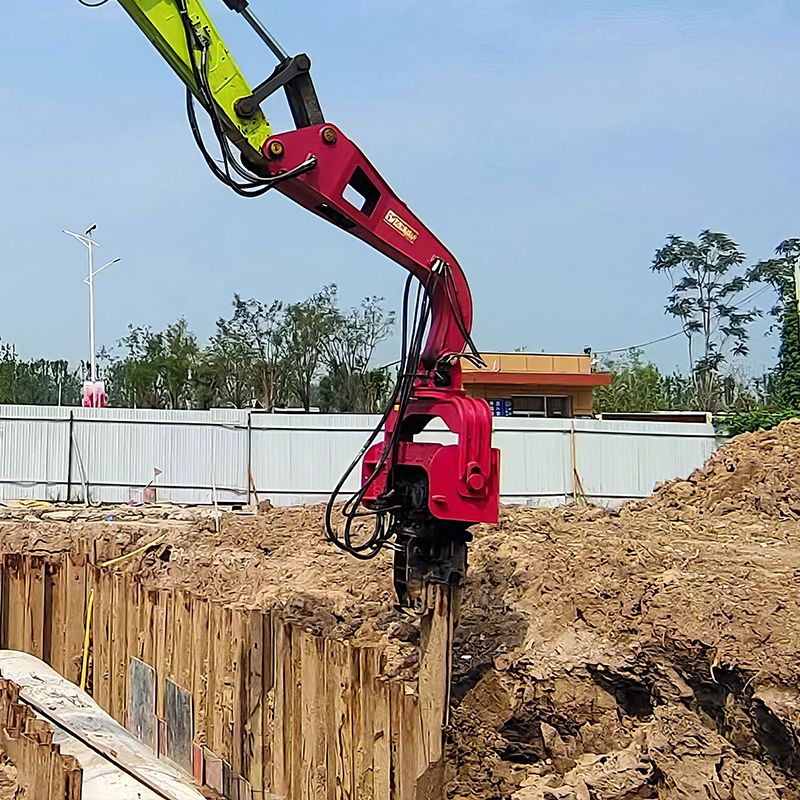
Compared to traditional large vibro or impact hammers, the Excavator-Mounted Vibro Hammer offers the ideal balance of efficiency, control, and environmental compliance for small to medium-scale foundation projects.
4. Hydraulic Impact Hammer
Hydraulic impact hammers are a modern upgrade from diesel hammers, using hydraulic power units as their energy source. These hammers can drive steel, timber, and precast concrete piles, with striking frequencies of up to 80 blows per minute.
While more environmentally friendly than diesel hammers, they are larger and require cranes and larger working spaces.
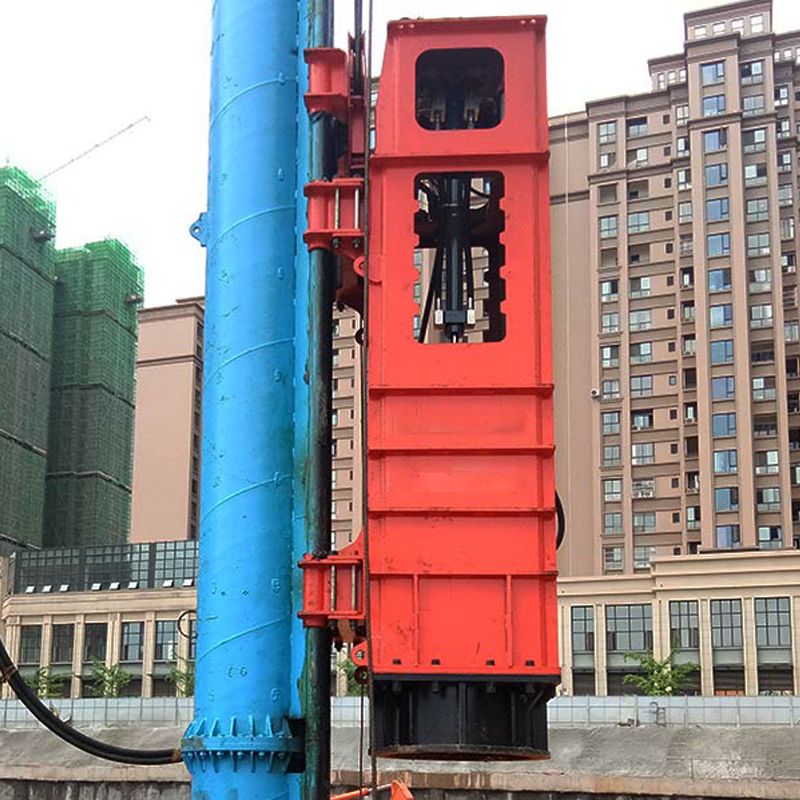
5. Air/Steam Impact Hammer
These hammers are powered by external sources like compressors or boilers. They come in two types:
- Single-acting: Free-fall impact with 50–60 blows/min; suitable for general soils
- Double-acting: Powered both upward and downward, reaching 90–150 blows/min
Due to their large size and high energy dependence, they're mainly used in specialized industrial or port projects today.
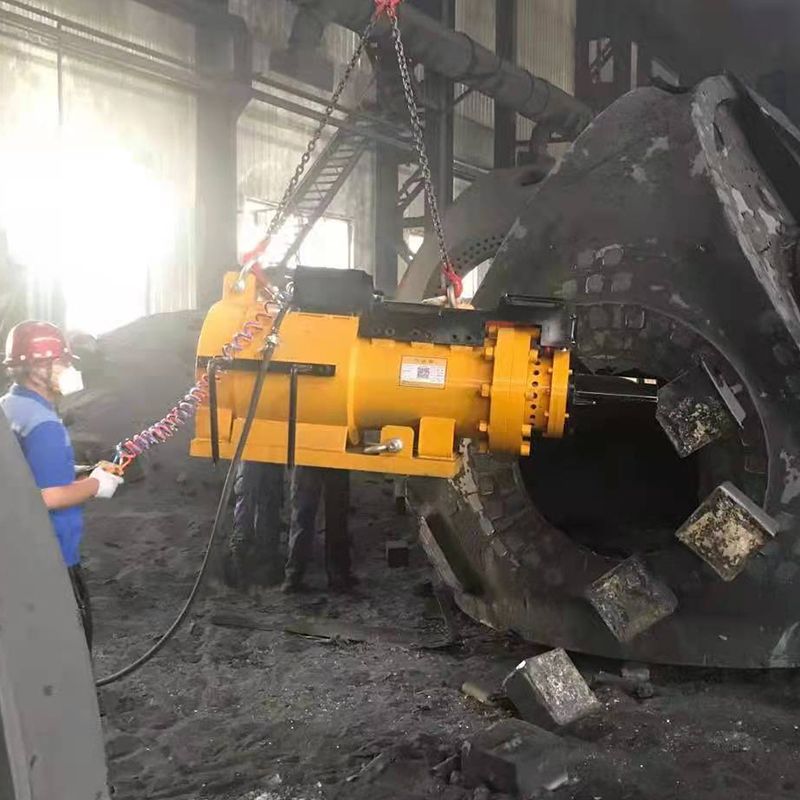
6. Silent Piler
Silent pilers use static hydraulic pressure to press piles silently into the ground. They're commonly used in highly sensitive areas like city centers or near hospitals.
✅ Pros: Noise-free and pollution-free
❌ Cons: Slow operation, high cost, limited soil adaptability
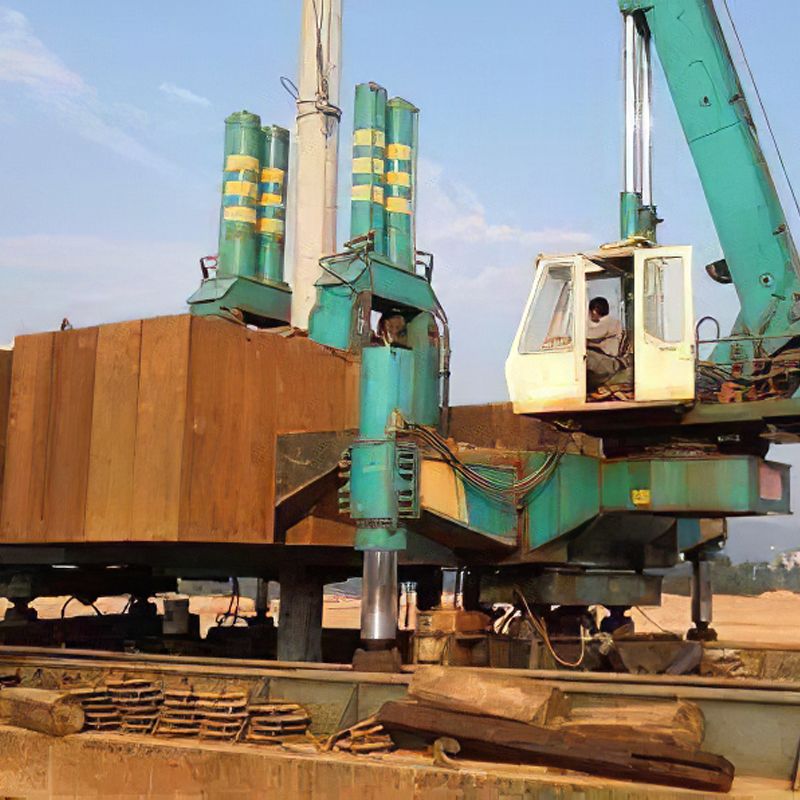
Conclusion: Why We Recommend the Excavator-Mounted Vibro Hammer
In modern foundation construction—especially in municipal, solar, and bridge projects requiring fast progress—the Excavator-Mounted Vibro Hammer stands out for its high efficiency, adaptability, low noise, and cost control.
If you're looking for a powerful yet flexible pile driving solution, this equipment could be your key to project success.
📞 Contact us for detailed specifications and real-world case studies!


 sales@wxbychina.com
sales@wxbychina.com








 HOME
HOME ABOUT
ABOUT PRODUCTS
PRODUCTS CASES
CASES VIDEOS
VIDEOS